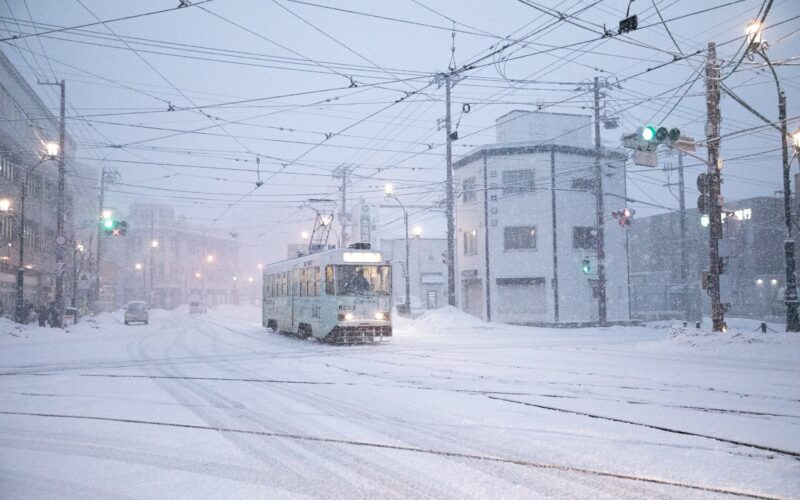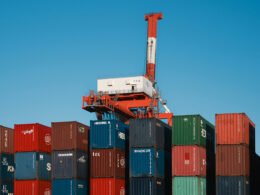According to CNN, climate anomalies have become more severe since last year, and there is a possibility of extreme summer temperatures and deadly cold snaps becoming more common, while severe weather continues to intensify.
Taipei, Taiwan (Business Northeast) – Did you experience the force of the cold snap during last winter? Spring is approaching, and there seems to be no warm weather yet. According to a CNN report, the climate anomalies have become more serious since last summer, with extremely high temperatures and frequent droughts in various places. Now deadly cold snaps may become a new normal phenomenon, and the severe cold weather will continue to intensify.
The deadly cold snap has swept across almost entire East Asia, from Taiwan, China, and Japan to South Korea, have been significantly affected. Yeh Sang-wook, a professor of meteorology at Hanyang University in South Korea, believes that the main reason for this phenomenon is related to the melting of the Arctic ice cap caused by global warming. An extremely cold front appeared when the cold air from the Arctic Circle passed through Siberia and reached the Korean peninsula. Coupled with the increase in melting ice, the ocean area has increased, and more water vapor has been incorporated into the air. The amount of rainfall and snowfall has increased compared with the past, and the climate has worsened.
Temperatures in Seoul dropped to minus 15 degrees, and other cities also set new low-temperature records. Jeju Island, a famous tourist attraction, canceled hundreds of flights, and Ferries were stuck in the port, unable to sail. Parts of North Korea experienced extremely low temperatures of minus 30 degrees. Mohe City in Heilongjiang Province of China has a new historical low-temperature record of minus 53 degrees Celsius. Yakutsk in eastern Siberia saw its coldest temperature in the past two decades, dropping to minus 62.7 degrees.
Japan is also one of the countries hardest hit by this deadly cold snap. A total of 16 trains were trapped on the way or at the station and could not move. The Shinkansen between Kanto and Kansai in Japan has been suspended in many places and at least 353 flights have been canceled. Many roads were impassable or cars were stranded on the way. The snowfall in Maniwa City, Okayama-ken hit a new high of 93 centimeters, and Kosa machi, Kumamoto-ken set a new low-temperature record of minus 9 degrees. In Nayoro City, Hokkaido, the ceiling of a convenience store collapsed due to more than 100 centimeters of snow. Fortunately, no one was injured.
In addition to East Asia, the climate of North America is also a region that is greatly affected by the deadly cold snap. Judah Cohen, the MIT climatologist, explains this phenomenon. Snowfall in Siberia has increased as polar regions warm four times faster than other regions due to climate warming, causing rapid melting of sea ice in the Barents Sea and the Kara Sea. The widening land temperature difference between western Europe and east Asia changed the airflow in the stratosphere over the North Pole and finally caused the Polar Vortex.
The polar Vortex transports cold air quickly to North America, increasing the frequency of severe cold weather. Since Christmas Eve last year, many places from Texas to Quebec have issued low-temperature warnings, and more than 100 million people have been frozen before the new year. The lowest temperature dropped to minus 57 degrees, causing the tragedy of death and the loss of contact of the people. The latest wave of winter storms has caused more than 1,700 flight cancellations across the United States and more than 350 car accidents in Utah. Strong winds toppled road trees and crushed utility poles, causing 850,000 people power outages, and affecting more than 60 million people across the United States.
Kevin Trenberth, a researcher at the US National Center for Atmospheric Research (NCAR), believes that based on the current climate conditions, extreme weather will become more and more severe due to the impact of El Nino and anti-El Nino phenomena, and become a “new normal”. The El Niño phenomenon is one of the main causes of the current deadly cold snap.
Under such a trend, we must look at this issue more carefully, because its impact is quite extensive. From the economy and people’s livelihood, agricultural loss, and transportation to people’s health and safety will be affected. Take Afghanistan, which lacks heating equipment, as an example. When the polar cold current came, traffic in many areas was cut off due to heavy snow. The poor weather made it difficult to provide aid for the people, and many people and livestock died as a result. If contingency measures can be planned, or we could make efforts to improve the causes, it is believed that there will be opportunities to reduce casualties and losses in the future.










